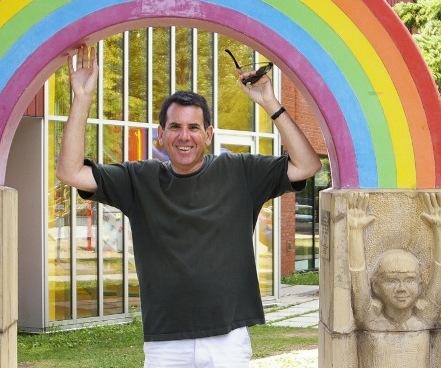When Joseph Lipson opened up his Second Cup café at the corner of Church and Wellesley in April 1984, he couldn’t have known he was laying down the geographic foundation of today’s gay community in Toronto. Over the years, “The Steps” in front of the café became a key meeting spot and an international icon of gay Toronto.
Lipson died in his Mississauga home on Jan 19. He was 61 and had been ill for several years.
He leaves behind a partner, John Gray.
Gray remembers when Lipson first opened the Church St Second Cup. He says Lipson just happened to be in the right place at the right time. He’d moved to Toronto from Montreal, where he grew up, in 1981 and was looking to open a franchise.
“The Second Cup said, ‘We’ve got three possible locations that we need franchises to go into.’ Joseph looked at them all and said, ‘This one at Church and Wellesley looks like a happening place; I‘ll take this one,'” Gray says.
During the five years that he owned the Second Cup, the centre of Toronto’s gay life gradually migrated from Yonge St over to Church St. The Second Cup became an important hangout for young gay people who weren’t old enough to go into the strip’s bars and clubs. At any time of the day, you could see people of all ages hanging out on the steps in front of the café.
“It created an icon, like any community needs,” says Dean Odorico, manager of Woody’s. “‘We’ll meet at the steps’ became part of the vernacular.”
The steps remained a community hub until new owners had them removed in 2001, in part to discourage people from hanging out there. The café closed a year later.
Mark McKinney and Scott Thompson, two young men who would eventually become famous as part of the sketch troupe The Kids in the Hall, met while working at Lipson’s Second Cup. They rehearsed sketches for the show in the café’s staff lounge and filmed a recurring sketch in which three gay men hang out on the steps. As the show was syndicated on CBC in Canada and on HBO and CBS in the United States, the steps became well-known across North America as the centre of Toronto’s queer life.
When Mel Lastman was elected the first mayor of amalgamated Toronto in 1998, local councillor Kyle Rae invited him to meet the gay community and took him right to the steps. A photo of Lastman on the steps appeared in several newspapers. It marked a turning point in Lastman’s relationship with the queer community and it culminated with his participation in the annual Pride parades.
Outside of his businesses, Lipson was also a community artist and organizer. He had a flair for theatre and appeared in productions ranging from Neil Simon’s Odd Couple to cabaret acts.
Shortly after the 1981 bathhouse raids, Lipson appeared in the variety show fundraiser Fruit Cocktail, in which he played eight roles.
“He was very outgoing, he loved to joke, and he liked a nice dry martini,” Gray recalls. “He loved travel. All we wanted to do was plan our next trip somewhere. His last trip abroad was in June 2010 to the Dominican Republic.”
Gray says Lipson was very fond of his gigantic standard poodle, Alfie.
“He was known in Mississauga as the guy with the irrepressible standard poodle,” Gray says. “He predeceased Joseph by just a couple weeks. We are hoping that they’re both over the rainbow bridge together.”
Lipson also published a chapbook of children’s poems in 2004, called On Mallard Feet, and wrote a song for a children’s chorus that has never been performed. Gray is still hoping to find a children’s chorus to perform the short song.


 Why you can trust Xtra
Why you can trust Xtra


